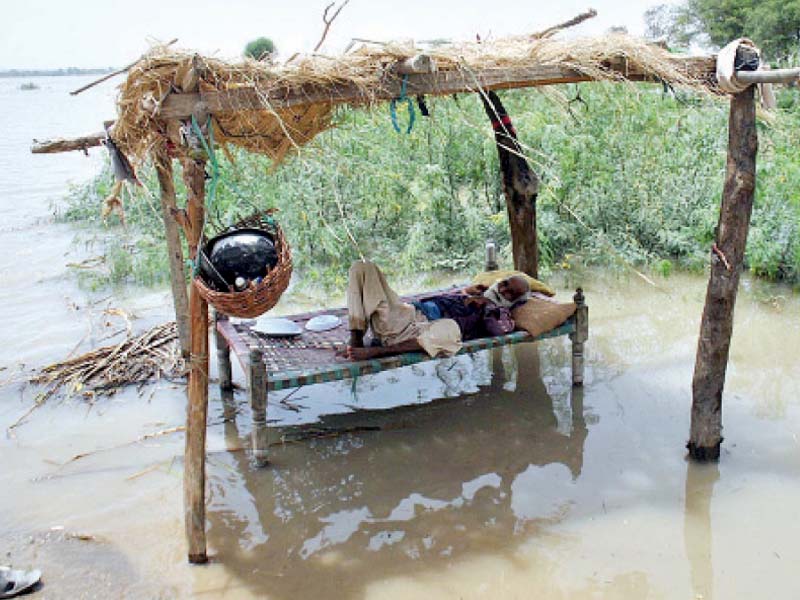
The third and hopefully final peak flood carrying around 750,000 cusecs of water is expected to pass through the Guddu Barrage on Saturday night and will reach the Sukkur Barrage on Sunday night. The Sukkur Barrage control room incharge, Abdul Aziz Soomro, said that Saturday's pond level at the Tarbela Dam was 1,549.16 feet with an inflow of 355,000 cusecs and an outflow of 328,200 cusecs. According to him, the melting ice at Skardu has increased the inflow at the Tarbela Dam. When the temperature at Skardu falls below 20 degrees Celsius, the dam authorities will fill the dam to its full capacity of 1,550 feet, he said. For now, one foot of water is discharged every day from the dam and this process will continue till the end of August.
Soomro said that the water-level at the Taunsa Barrage has also begun receding and on Saturday, its upstream and downstream was 487,522 cusecs. The upstream at the Panjnad Barrage was 125,087 cusecs and downstream was 119,887 cusecs. The water-level at the Guddu Barrage is rising constantly, with an upstream of 725,324 cusecs and downstream of 701,905 cusecs on Saturday. Soomro went on to say that the upstream at the Sukkur Barrage was 666,990 cusecs and the downstream was 617,840 cusecs, while the Kotri Barrage's upstream was 480,430 cusecs and downstream was 456,125 cusecs. He was of the view that the season's third peak flood might prove to be its last, after which all the rivers will start flowing according to their normal position.
On the one hand, the pressure on the protective embankments in southern Punjab has reduced to some extent, while on the other, protective bunds from the Guddu to Sukkur barrages and from the Sukkur Barrage to Hala are under tremendous pressure.
Despite claims of providing all possible facilities to the marooned, complaints are pouring in from different cities and towns about the ineptitude of the district administrations and relief agencies. A majority of the residents of the katcha areas, after evacuation, have moved to their relatives' homes in the nearby cities and towns, while a smaller number of people residing in the relief camps are not being properly taken care of.
A group of journalists on Friday visited some of the villages in the katcha area situated on comparatively higher ground, near the Qadirpur Loop Bund, where a large number of people are still stranded. The Abdul Ghani Chachar village consists of more than 120 houses and its residents are not ready to evacuate due to lack of facilities in the relief camps. Some of the villagers, when asked why they are not evacuating to the relief camps, said that due to the lack of facilities in the camps they have decided to stay back, adding that the water will recede in the next couple of days. On this occasion, the journalists distributed packets of cooked food and dry rations among the villagers.
Published in The Express Tribune, August 9th, 2015.

















COMMENTS (1)
Comments are moderated and generally will be posted if they are on-topic and not abusive.
For more information, please see our Comments FAQ